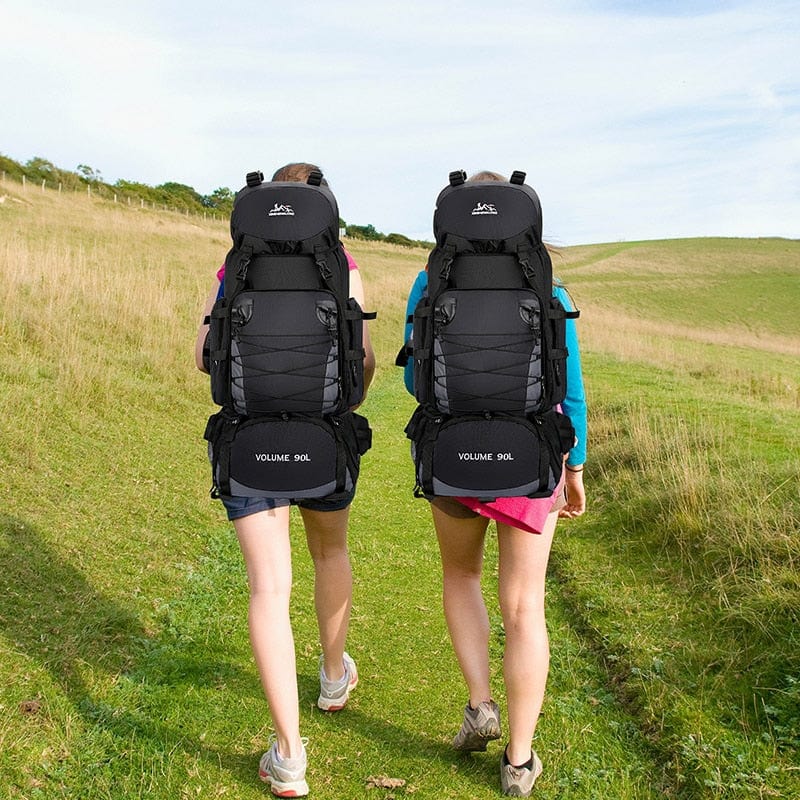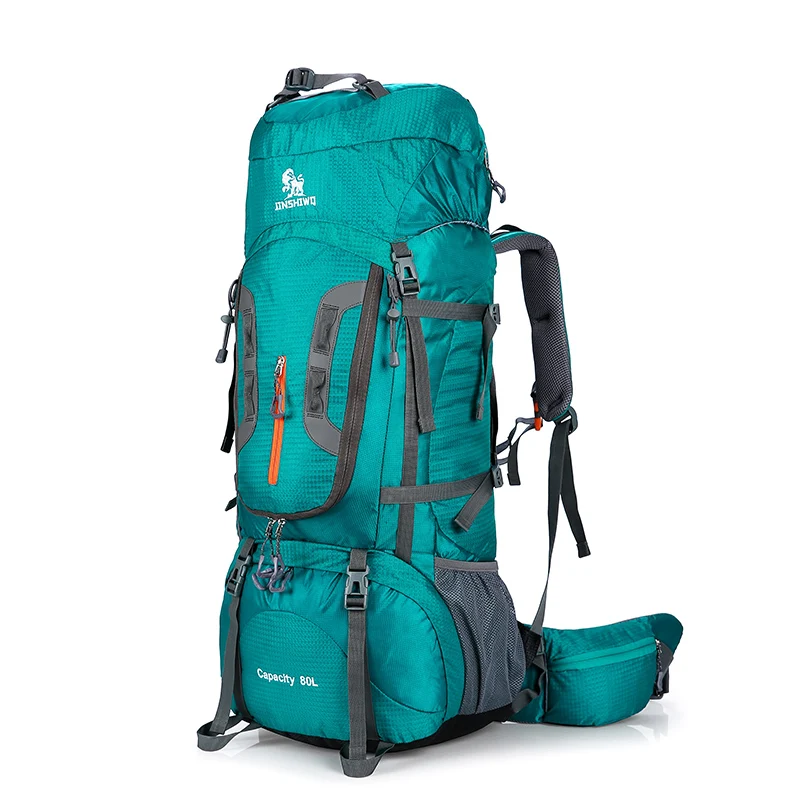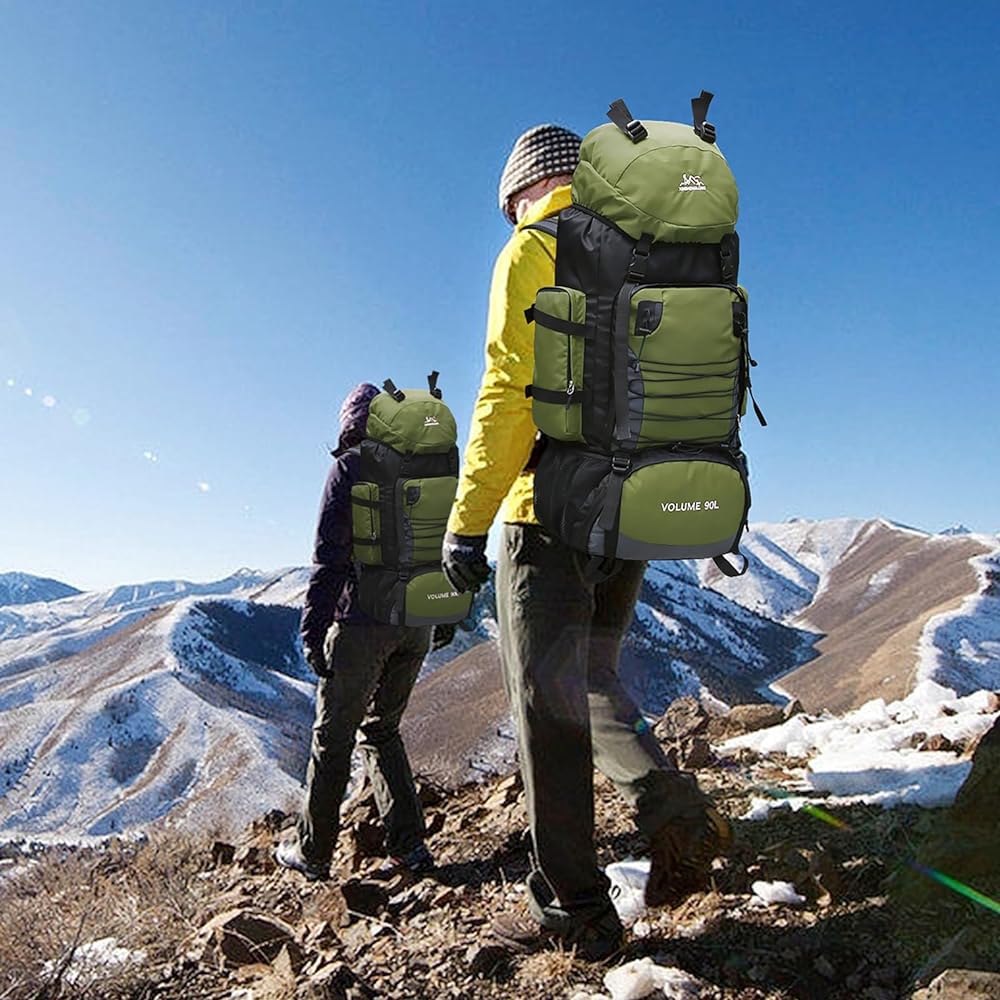I. Introduction

A. The Importance of Choosing the Right Hiking Backpack
Selecting the right hiking backpack is crucial for any outdoor adventure. It is an essential piece of gear that not only holds all your supplies but also contributes significantly to your comfort, safety, and overall hiking experience. A well-chosen backpack can make your hiking trips more enjoyable, while an ill-fitting or inadequate one can lead to discomfort, fatigue, and even injury.
B. Brief Overview of the Content
In this comprehensive guide, we will delve into the key factors to consider when choosing a large hiking backpack. We will explore the importance of understanding your personal needs and requirements, the essential features to look for in a large hiking backpack, and the considerations for achieving the right fit and comfort.
II. Selecting the Right Large Hiking Backpack
A. Understanding Your Needs and Requirements
When choosing a large hiking backpack, it’s essential to assess your specific needs and requirements. Consider the type and duration of your hiking trips, the climate and terrain you’ll be encountering, the amount of gear you need to carry, and any personal preferences or physical limitations. Understanding these factors will help you select a backpack that best suits your unique needs, ensuring a more comfortable and practical hiking experience.
B. Features to Look for in a Large Hiking Backpack
Large hiking backpacks come with a variety of features designed to enhance functionality, convenience, and comfort. These features may include multiple compartments and pockets for organization, adjustable straps for weight distribution, padded hip belts for stability, ventilation systems for airflow, and compatibility with hydration systems. Understanding these features and how they align with your needs is crucial for choosing the right backpack for your outdoor adventures.
C. Considerations for Fit and Comfort

Fit and comfort are paramount when selecting a large hiking backpack. A well-fitted backpack should distribute the weight evenly, with the bulk of the load resting on your hips rather than your shoulders. Factors such as torso length, hip belt padding, shoulder strap adjustability, and ventilation can significantly impact the overall comfort of the backpack. Additionally, considering your own body shape, size, and any specific comfort requirements will contribute to a more enjoyable hiking experience.
III. Organizing and Packing Your Backpack
A. Utilizing Compartments and Pockets Effectively
When it comes to organizing your backpack, utilizing its compartments and pockets effectively is crucial. Different backpacks offer various internal and external compartments, each designed for specific purposes. Utilize these areas to arrange your gear systematically, ensuring easy access to items without disrupting the balance of the pack. Smaller pockets are ideal for storing items you may need on the trail, such as a map, compass, sunscreen, or snacks. Larger compartments can accommodate clothing, bulky gear, or camping essentials. Familiarize yourself with the layout of your backpack and maximize its organizational potential to streamline your hiking experience.
B. Distributing Weight for Balance and Comfort
Distributing the weight of your gear evenly and properly within your backpack is essential for maintaining balance and comfort during your trek. Heavier items should be placed closer to your back and centered in the pack to prevent it from pulling away from your body. This arrangement will effectively distribute the weight onto your hips and minimize strain on your shoulders. Lighter items can be placed towards the outside of the pack. Ensuring a balanced load will reduce the risk of discomfort, prevent imbalance, and contribute to a more pleasant hiking experience, especially during long or challenging trails.
C. Essential Gear and Items to Pack
The contents of your hiking backpack are critical for a successful and safe outdoor adventure. Essential items to consider include appropriate clothing and footwear, navigation tools (map, compass, GPS), hydration supplies or water bottles, nutrition (energy bars, trail mix), a first aid kit, emergency supplies (whistle, emergency blanket), and any specific equipment tailored to your hiking plans, such as camping gear, a headlamp, or trekking poles. Pack only what is necessary for the trip to minimize the weight of your backpack while ensuring you have the essentials for comfort, safety, and preparedness.
IV. Adjusting and Carrying Your Backpack
A. Properly Fitting and Adjusting Straps
Ensuring your backpack fits properly is essential for comfort and efficiency. Start by adjusting the shoulder straps, followed by the hip belt and chest strap. The hip belt should sit on your hips, distributing the weight onto your legs, while the shoulder straps should be snug but not overly tight. Properly adjusted straps will help alleviate pressure points and prevent chafing, ultimately contributing to a more comfortable hiking experience.
B. Techniques for Properly Carrying a Loaded Backpack
The way you carry your loaded backpack can significantly impact your hiking experience. Techniques such as leaning forward slightly when ascending inclines and leaning back slightly when descending can help maintain balance and stability. Additionally, using trekking poles can aid in weight distribution and reduce the impact on your lower body. It’s also important to maintain an upright posture and take regular breaks to rest and readjust your backpack as needed.
C. Maintaining Balance and Stability on the Trail
Maintaining balance and stability while on the trail is essential for preventing falls and injuries. Focus on your posture, keeping a low center of gravity, and taking deliberate steps. This can help minimize the risk of stumbling or losing balance, particularly when navigating uneven terrain or varying elevations. Being attentive to your surroundings and the distribution of weight in your backpack will also contribute to maintaining stability throughout your hike.
V. Maintaining and Caring for Your Backpack
A. Cleaning and Maintenance Tips
Proper cleaning and maintenance are essential for maximizing the lifespan and performance of your hiking backpack. Regularly inspect and clean your backpack after each adventure. Use a mild detergent, warm water, and a soft brush to remove dirt and stains, and allow the backpack to air dry thoroughly before storing it. Pay special attention to zippers, buckles, and straps, ensuring they are free from debris and functioning correctly. This not only maintains the visual appeal of the backpack but also ensures that it performs optimally and is ready for your next outdoor excursion.
B. Storing Your Backpack Properly
Proper storage is critical for preserving the structural integrity of your hiking backpack. Store your backpack in a cool, dry place away from direct sunlight to prevent fabric deterioration and fading. Loosen all straps and keep all compartments unzipped to allow air circulation and prevent mold or mildew growth. Impact or constant pressure on the backpack can affect its shape and structure, so consider hanging it or storing it on a flat surface to maintain its form.
C. Extending the Lifespan of Your Hiking Backpack
To extend the lifespan of your hiking backpack, consider the following tips. Regularly inspect the backpack for signs of wear and tear, and promptly address any issues such as loose stitches or fraying fabric. Avoid overloading your backpack beyond its recommended capacity, as this can strain the seams and materials, leading to premature deterioration. Additionally, be mindful of how you handle the backpack, minimizing abrasion against rough surfaces or sharp objects to prevent damage to the material.
Choosing the right large hiking backpack involves careful consideration of your needs, an understanding of essential features, and a focus on achieving the perfect fit and comfort. By taking the time to assess these elements, you can ensure that your backpack enhances rather than hinders your outdoor adventures, ultimately leading to more enjoyable and successful hiking experiences.

